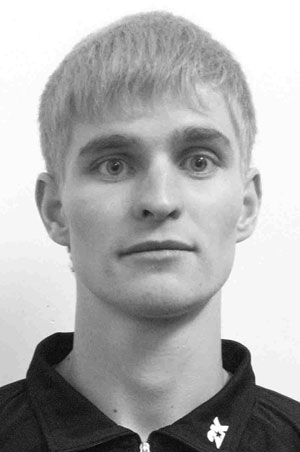Success in football judicial work of people with different structures of personality
Фотографии:
ˑ:
Master Filipkin A.
Dr. Polozov, A.A.
E. Schürmann
IFKSiMP UFU (Yekaterinburg)
Keywords: refereeing, football, typology, personality, success
Introduction. In the previous researches we defined the characteristics in view of the case study of the personnel of the panel of judges in accordance with the modular personality typological structure:
- most of psychologists of the past allocated the sphere of interest orientation, " will and feelings" and intellectual sphere in the personality structure.
- we included in each of the spheres the well-known personality types to each of the spheres (C. Jung, I. Myers-Briggs) character types (Nancy McWilliams (1998), Claudio Naranjo (1998), Alexander Lowen (2000) and types of intelligence (H. Gardner (1983) (briefly, the concept of PT + CT + TI) [4]. Every person has one of 16 PT, CT 1 of 8 [8] and all TI. There are presumably 7 of them including analytical, linguistic, spatial, interpersonal, intra-personal, bodily-kinesthetic and musical. Usually, one of them is developed better than others. It is marked as TI.
- personality types are formed from four dichotomies (alternative qualities):
Ir - irrationality - ability to act according to circumstances (P)
Ra - rationality - desire for planning personal actions (J)
Ex - extraversion - urge to communicate, act (E)
In - introversion - urge to think instead of acting (I)
Se - sensation - ability to perceive the world "in details” (S)
Int - intuition - ability to interpret ideas, imagination. (N)
Et - ethics - actions with regard to the opinion of others (F)
Lo - logic - actions within found logical path (T)
Their socionics names have assimilated in Russia. Another version of the name - English (perceiving, introversion; extraversion; sensation; intuition; thinking; feeling), but the literal translation is inconvenient from the practical point of view, so we will use the socionics counterparts. The socionics and the Myers-Briggs typology have much in common (similar conceptual framework has a completely different objective sense), along with theoretical differences, in particular, in the type of the functional model. The authors do not subscribe to the opinion on the information metabolism and interpret personality types by the typology by Carl Jung, Isabel Myers-Briggs, Katherine Briggs.
In the sphere of "will and feelings" 8 character types are being gradually outlined from numerous works. N. McWilliams (1998), C. Naranjo (1998), A. Lowen (2000), K. Horney (1995) identified:
1. Schizoid - loneliness, fantasies, coldness, selectivity.
2. Narcissism - envy, self-revaluation, need for admiration.
3. Paranoid - mistrust, neglect of other people, unsociability.
4. Compulsive - doubts, pedantry, excessive scrupulousness.
5. Psychopathic - cruelty, desire to "win all", disregard.
6. Hysterical – display behavior, theatricality, publicity.
7. Depressive – compromising attitude, fear of abandonment, depression.
8. Masochistic - patience, hoping for something good in the future.
The purpose of the study was to allocate the factors of success in refereeing work in football of people with different personality structures.
The researchers suggested that irrational sensory persons with compulsive character type are the best referees (Tab.1) [1].
Table. 1. Sports club personnel
|
Job title |
Character type |
|
Head of sport |
Schizoid |
|
Team head coach |
Narcissism |
|
Club President |
Narcissism |
|
Club head coach |
Narcissism |
|
Selecting coach |
Compulsive |
|
Second coach |
Compulsive |
|
Forward |
Psychopathic |
|
Playmaker |
Schizoid |
|
Back |
Paranoid |
|
Judge |
Compulsive |
|
Team psychologist |
Depressive |
|
Youth sports school coach |
Masochistic |
|
Пресс-атташе |
Hysterical |
|
Administrator |
Hysterical |
|
Club Manager |
Schizoid |
|
Club Accountant |
Paranoid |
|
Doctor, club lawyer |
Compulsive |
Results and discussion. This hypothesis was checked within the framework of the educational experiment of master A. Filipkin. The experiment was conducted within the examination of 42 active referees, servicing games of various levels in the Urals Federal District. The average score of the judges in the UFD was 8.3 points (Tab. 2). The distribution of scores among judges is close to the so-called normal distribution, indicating to the relative objectivity of ratings (Fig. 1).
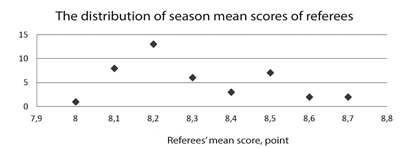
Fig. 1. Normal distribution of referees’ scores
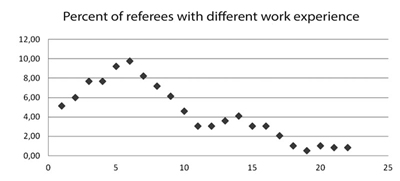
Fig. 2. The distribution of referees by age
Table 2. The summary table of the findings
|
Full name |
Age |
Experience |
Point |
PT |
CT |
|
A. Ya.S. |
1990 |
2 |
8,3 |
ESFR |
Depressive |
|
A. A.S. |
1986 |
4 |
8,2 |
ISFJ |
Masochistic |
|
A. I.A. |
1992 |
1 |
8 |
ESFJ |
Depressive (masochistic) |
|
B. G.V. |
1985 |
5 |
8,2 |
ESFJ |
Depressive |
|
B. A.P. |
1977 |
4 |
8,3 |
INFR |
psychopathic |
|
V. R.R. |
1967 |
14 |
8,1 |
INFJ |
Masochistic |
|
V. N.A. |
1967 |
15 |
8,2 |
ESFJ |
Masochistic |
|
G. Е.М. |
1988 |
8 |
8,6 |
ESTR |
Psychopathic |
|
G. A.S. |
1990 |
5 |
8,6 |
ESTJ |
Depressive |
|
Zh. A.I. |
1985 |
10 |
8,2 |
ESTR |
Masochistic |
|
K. A.V. |
1986 |
9 |
8,4 |
ESTR |
Psychopathic |
|
K. R.N. |
1983 |
2 |
8,2 |
ISTR |
Psychopathic |
|
K. A.Yu. |
1970 |
7 |
8,3 |
ESFJ |
Paranoid (narcissistic) |
|
K. S.A. |
1987 |
7 |
8,5 |
ESTR |
Hysterical (psychopathic) |
|
K. O.A. |
1989 |
3 |
8,1 |
ESTJ |
Paranoid (psychopathic) |
|
L. R.M. |
1979 |
13 |
8,5 |
ENFR |
Schizoid |
|
L. E.V. |
1987 |
5 |
8,1 |
ENFJ |
Masochistic (paranoid) |
|
M. A.V. |
1989 |
7 |
8,1 |
ESTJ |
Compulsive (psychopathic) |
|
M. Yu.V. |
1987 |
7 |
8,3 |
ESTR |
Psychopathic |
|
M. R.L. |
1984 |
9 |
8,2 |
ENFR |
Psychopathic |
|
O. A.R. |
1987 |
4 |
8,2 |
ESFJ |
Depressive |
|
O. D.V. |
1994 |
1 |
8,1 |
ISTJ |
Psychopathic |
|
P. P.A. |
1989 |
6 |
8,2 |
ISTJ |
Masochistic |
|
P. A.L. |
1988 |
8 |
8,2 |
ESTJ |
Depressive (psychopathic) |
|
P. Yu.S. |
1989 |
3 |
8,5 |
ESFJ |
Masochistic |
|
P. I.R. |
1987 |
6 |
8,5 |
ESTR |
Psychopathic |
|
P. M.E. |
1988 |
7 |
8,5 |
ISTJ |
Paranoid (depressive) |
|
P. V.V. |
1972 |
18 |
8,7 |
ISTR |
Hysterical |
|
R. V.A. |
1990 |
4 |
8,1 |
ENTR |
Narcissistic |
|
R. A.A. |
1983 |
8 |
8,3 |
ISFJ |
Compulsive (masochistic) |
|
S. M.Yu. |
1987 |
8 |
8,7 |
ESTJ |
Depressive |
|
T. V.N. |
1973 |
16 |
8,2 |
ENTR |
Psychopathic |
|
T. D.A. |
1973 |
12 |
8,2 |
ISTJ |
Schizoid |
|
U. E.V. |
1989 |
3 |
8,1 |
ESTJ |
Hysterical (depressive) |
|
Ch. A.V. |
1981 |
12 |
8,3 |
ESTR |
Narcissistic |
|
Ch. S.P. |
1971 |
15 |
8,4 |
ISTJ |
Psychopathic |
|
Sh. A.G. |
1973 |
22 |
8,5 |
ESFR |
Masochistic |
|
Sh.E.N |
1975 |
14 |
8,5 |
ESTR |
Narcissistic |
|
Ya. V.A. |
1989 |
4 |
8,1 |
ESTJ |
Depressive (paranoid) |
For further research we need to understand the way referees are distributed in number by age. Smoothing was carried out in seven points.
As seen from the diagram, the maximum number of referees is grouped around 7 years of work experience. The smooth curve was obtained using the following conversion:
Y’(1) = (5Y(1)+2Y(2)-Y(3))/6
Y’(2) = (Y(1)+Y(2)+Y(3))/3
Y’(3) = (Y(1)+Y(2)+Y(3)+Y(4)+Y(5))/5
Y’(N-1) = (Y(N)+Y(N-1)+Y(N-2))/3
Y’(N) = (5Y(N)+2Y(N-1)-Y(N-2))/6
What was enough for the first smoothing cycle was the result of the narrow range of distribution of all referees (Fig. 3).
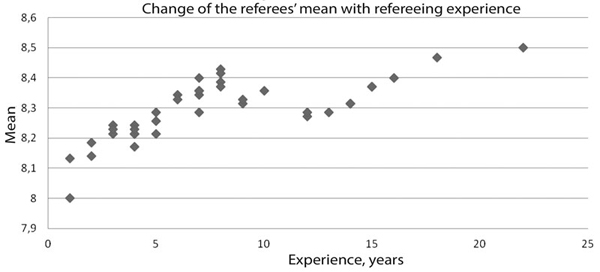
Fig. 3. A diagram of the dependance of the mean score of referees’ work for the season and their work experience
After 7 years of refereeing experience the outflow of personnel is observed, but the mean score of the rest is growing at the expense of the outflow of less-skilled personnel (Fig. 4).
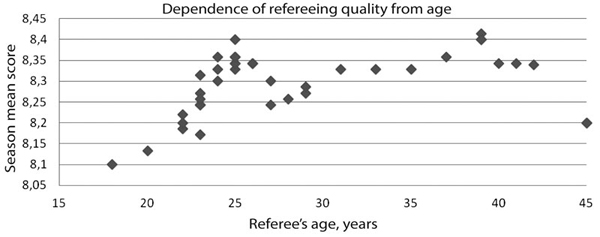
Fig. 4. The age of highest scores for referees
The diagram of the ratio of refereeing quality and age is even more demonstrative. Proceeding from the findings, referees aged 25 with a 7-year refereeing experience get the highest scores. The best results are achieved in sport at this age, along with the highest intelligence index value IQ. Getting through this peak, deterioration of intellectual and physical parameters will inevitably reduce referee’s score which, in turn, will have a demoralizing effect on him. The reduction of physical and intellectual conditions projected to the season ratings decline is assumed to provoke to a large extent an outflow of refereeing personnel (Fig. 5.).
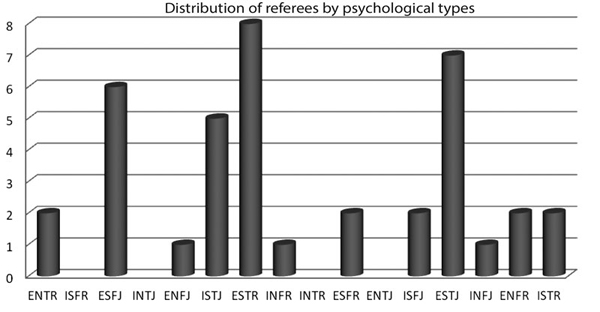
Fig. 5. The number of referees with different psychological types
First the mean score of rational-irrational referees was compared, followed by extrovert and introvert referees etc. (Fig. 6).
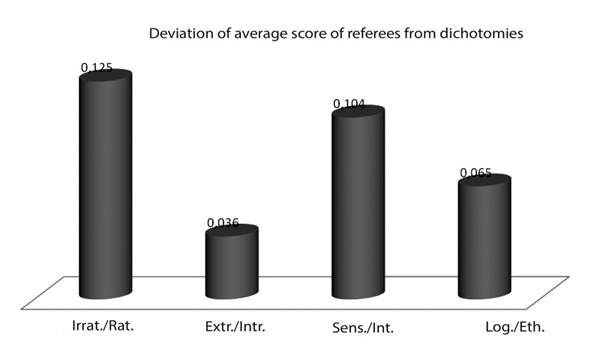
Fig. 6. Comparison of referees’ means by dichotomies
As seen from the figure, rationality / irrationality are of primary importance for a football referee (Fig. 7). In this pair the drop in the level of refereeing scores is the largest. Irrational persons are more ready for the unexpected course of events and are capable of rapid decision-making. They have average scores of 0.12 points higher than rational ones. Another factor of importance is the sensing / intuition combination. Here the difference is also very big - 0.1 points. Irrational sensory persons have the average score 0.229 points higher than rational intuitive persons, which is more than a lot. The combination of ESTR will be perfect. People with this PT will have an estimate of 0.3 points above the average. In can be represented in the following way (Tab. 3)
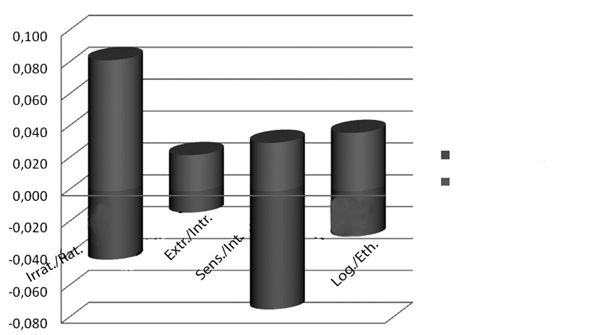
Fig. 7. The contribution of different aspects to the referee’s average score
Table 2. The average deviation of referees’ scores in view of personality types
|
Irr |
0,082588 |
|
Rat |
-0,04255 |
|
Extr |
0,023111 |
|
Intr |
-0,013 |
|
Sens |
0,03075 |
|
Int |
-0,07371 |
|
Log |
0,037 |
|
Ethi |
-0,028 |
And the last sphere is intellectual. Bodily-kinesthetic and spatial types of intelligence are the most popular ones in football of 7, allocated by G. Gardner. The first ensures "feeling" athletes’ skills, while the second - spatial evaluation of competition. Indirectly bodily-kinesthetic intelligence can be estimated by the referee’s skill level as a football player. There is a common ranking: no class, 2nd class, 1st class, candidate master, master of sports. Spatial intelligence can be assessed using a part of the standard IQ test, which offers to compare different spatial forms.
As can be seen from the diagram, the transition to each subsequent skill level of referee as a football player provides the average increment of his score already as a referee by 0.11 (Fig. 8). This is a huge boost.
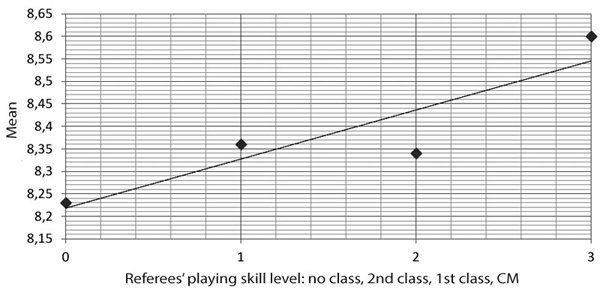
Fig. 8. Change in the rational and irrational ratio with age
The IQ test we had chosen contained 11 questions. An average university student answers correctly 8 out of 11 questions. An average number of correct answers of referees was 7.9, which is practically the same. However, the coefficient of the ratio of the number of correct answers and the referee’s assessment of the level of the season was equal to 0.34, which makes it impractical to use this test to evaluate referees.
As a result, all of these figures can be summarized in a simplified ranking model of football referee (Tab. 4). It depends on the psychological characteristics and work experience:

Fig. 9. The total amount of deviations from the mean scores based on the dichotomies
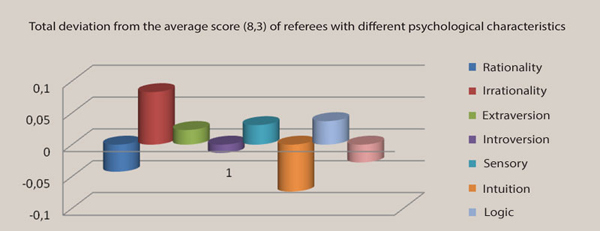
Fig. 10. Change in the rational and irrational ratio with age

Fig 11. Change in the extrovert-introvert ratio with age
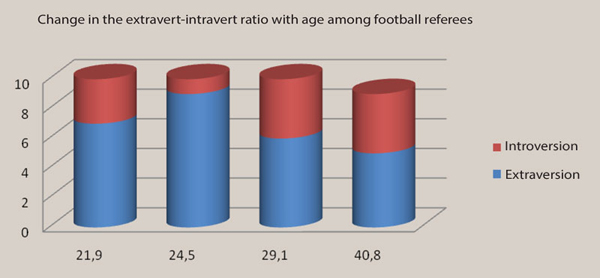
Fig.12. Change in the sensory and intuitive ratio with age
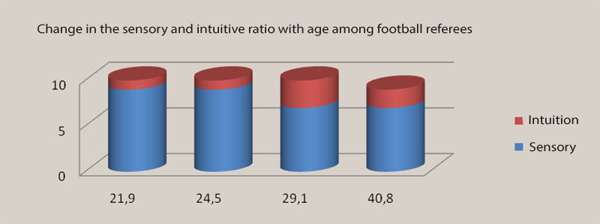
Fig. 13. Change in the logic and ethics ratio with age
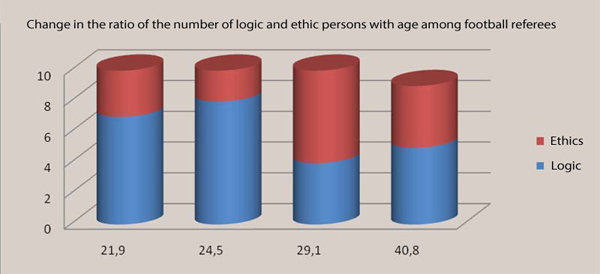
Fig. 14. The number of judges with different CT in various age categories
Table 3. Model to calculate the expected ranking of referees’ work
|
Mean estimate |
PT |
|
CT |
|
Experience |
|
skill |
|||
|
8,3 |
Ir |
0,056 |
Schizoid |
0,025 |
1 |
-0,25 |
9 |
0,02 |
nc |
-0,08 |
|
8,3 |
Ra |
-0,034 |
Paranoid |
-0,027 |
2 |
-0,12 |
10 |
-0,05 |
2c |
0,03 |
|
8,3 |
Extraversion |
0,010 |
Narcissus |
0,008 |
3 |
-0,08 |
11 |
0,01 |
1c |
0,14 |
|
8,3 |
Introversion |
-0,005 |
Psychopathic |
0,030 |
4 |
-0,06 |
12 |
0,01 |
CM |
0,27 |
|
8,3 |
Sensory |
0,026 |
Compulsive |
-0,172 |
5 |
-0,02 |
13 |
0,04 |
|
|
|
8,3 |
Intuition |
-0,090 |
Hysterical |
0,100 |
6 |
0,03 |
14 |
0,02 |
|
|
|
8,3 |
Logics |
0,019 |
Depressive |
0,040 |
7 |
0,08 |
15 |
0,02 |
|
|
|
8,3 |
Ethics |
-0,018 |
Masochist |
-0,046 |
8 |
0,06 |
16 |
0,10 |
|
|
Table 4. Calculation example
|
Agafonov Ya. |
Ir/Rat |
Extr/Intr |
Sen/Int |
Log/Eth |
CT |
Age |
Skill |
Points |
Actual estimate |
|
8,3 |
0,056 |
0,010 |
0,026 |
-0,018 |
0,028 |
-0,11 |
0,03 |
8,32 |
8,3 |
|
Zheludkov A. |
|||||||||
|
8,3 |
0,056 |
0,010 |
0,026 |
0,019 |
-0,058 |
-0,04 |
-0,08 |
8,24 |
8,2 |
|
Tarasov D.A. |
|||||||||
|
8,3 |
-0,034 |
-0,005 |
0,026 |
0,019 |
0,013 |
0,02 |
-0,08 |
8,26 |
8,2 |
A "bonus" for rationality / irrationality, extroversion / introversion, sensing / intuition, logic / ethics is added to the average estimate of referee’s work experience in the UrFD - 8.3, along with character type, experience and class (Tab. 5).
Conclusions.
1. Proceeding from the results of the studies, referees’ estimates decrease after reaching the physiological and intellectual peak of 25 years, stipulating for an essential outflow of the personnel. The referees’ average falls in the age of 25-28. Another trend of the further outflow of the refereeing personnel along with remaining most qualified staff with the average level higher than of the others starts from the age of 29. It provides for the rise of the average of estimations of highly skilled referees. Such referees reach their maximum in qualification in the age of 39 and 16 years of refereeing experience. Then a decline of their qualification is observed.
2. The sphere of interest orientation was the most informative from psychological point of view. It was found that:
- More than a half of all referees belong to the psychological types ESFJ, ESTJ, ESTR and ISTJ.
- Sensation, extroversion, rationality and logic are the most "popular" among referees of the UFD. Intuition is the least popular.
- ESTR seems to be a perfect psychological type to judge. However, irrational sensory (SR) is to be considered a recommended condition for referees’ qualification.
3. The studies revealed a rather weak impact of “will and feelings” - character types - on the assessment of refereeing. It was found that:
- More than half of referees have psychopathic, depressive and masochistic character types. There is nothing surprising here, since these CT have the greatest stress resistance which is very common in the life of a football referee.
- in most cases of the fluctuations of referees’ scores were within the interval -0,05:0,05 and had a slight effect on the overall estimate. The estimate is unreliable for compulsive and hysterical character types because of the small number of subjects.
- the expressed assumption on the priority compulsive CT has not been confirmed, most likely because of uncertainty inherent in these people.
- character type does not affect success in refereeing and refereeing experience.
4. The identification of age dynamics showed that:
- irrational exclude rational persons. The rest of dichotomies are balanced and do not trend to change the ratio of opposing properties.
- depressive CT tends to grow steadily among other CT. Compulsive, hysterical and schizoid CT almost "disappear”. Paranoid, narcissistic and schizoid CT arise from time to time and are unstable. Psychopathic, masochistic CT are stable at all times.
5. Bodily-kinesthetic and spatial types of intelligence are the most popular ones in football of 7, allocated by G. Gardner. The first ensures "feeling" athletes’ skills, while the second - spatial evaluation of competition. Indirectly bodily-kinesthetic intelligence can be estimated by the referee’s skill level as a football player. There is a common ranking: no class, 2nd class, 1st class, candidate master, master of sports. The increase of referee’s class by one level ensured an increase in referees’ estimates by 0.11 on the average.
References
- Ivanov, Yu.V. Business Socionics. - Moscow. 2001. – 184 P. (In Russian)
- The innovation pattern of personality structure / A.A. Polozov / Marketing i menedzhment іnnovatsіy. – 2013. № 1. (In Russian)
- Psychological structural patterns in sport / A.A. Polozov, N.N. Polozova / Moscow: Sovetsky sport, 2009. (In Russian)
- Polozov, A.A. Psychological profiles of sports club staff // Sportivny psikholog, № 3 (6), 2005. (In Russian)
- Polozov, A.A. What relationships have a positive effect on sports result? / A.A. Polozov // Sportivny psikholog. № 3 (18) 2009 P. 47-53. (In Russian)
- What relationships have a positive effect on sports result? / A.A. Polozov, E.G. Shurmanov / / Teoriya i praktika fizicheskoy kultury, – 2012, № 1. – P. 74-78. (In Russian)
- Talanov, V.L. Handbook of practical psychologist / V.L. Talanov, I.G. Malkin-Pykh. St.Petersburg: Sova, Moscow: EKSMO, 2002. – 928 P. (In Russian)

